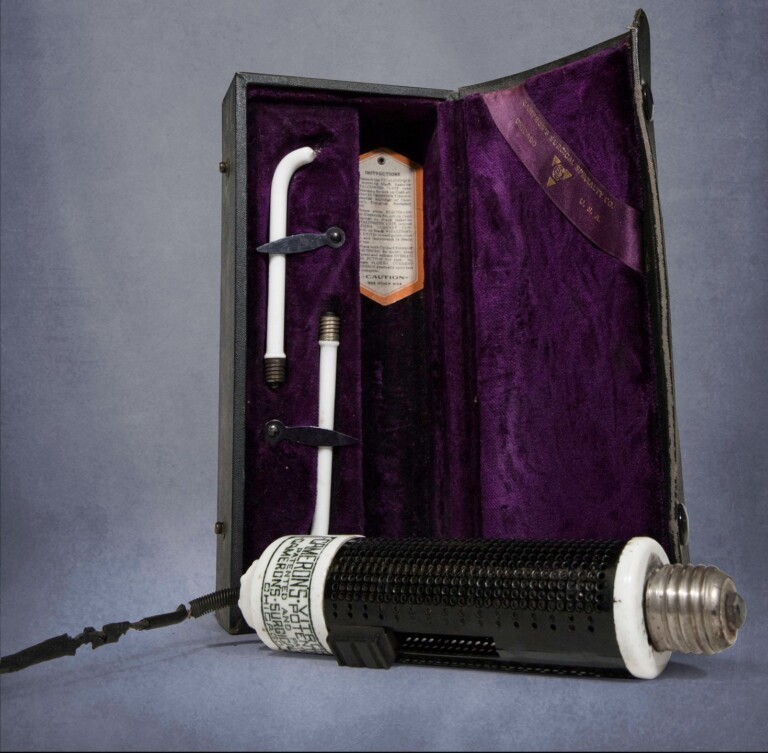Before X-rays were standard, this innovation helped diagnose patients with blasts of white light.

Larry Cohen, Benco Dental Chairman and Chief Customer Advocate, has over the past half-century collected hundreds of unique dental artifacts, which reside at Benco’s home office in Pittston, Pennsylvania,
Before you read any further, take another peek at the item shown above. At first glance, it looks a bit like a science-fiction ray gun or a jumbo sparkplug. (That’d be some car.) Now look closer. It is, in fact, a piece of dental equipment. Notice the electric cord, the threaded back end that fits into a light socket, the sliding switch that gradually increases or decreases the electricity going to the end and, finally, those white Bakelite tips. Any guesses? Cautery? An electro-surgical instrument?
That was my hunch, but I wasn’t sure. I thought I’d seen pretty much ever dental product, innovation and gizmo of the past century. This one stumped me a little, so I spent a lot of time last year trying to figure out exactly what it was.
It turns out that I was wrong. (You probably were too. No one’s keeping score.) This electrical marvel is something called a trans-illuminator.
There was a time, during dentistry’s early years, when conventional wisdom held that illuminating teeth with a strong white light was superior to, and safer than, X-ray for diagnosing infection and decay. The trans-illuminator looks similar to a device from about 100 years ago called the Cameron Dental Diagnostoset, a popular medical tool used to distinguish between healthy and congested tissue. Both the trans-illuminator and the Diagnostoset came in lined cases that underscored their value and utility. This is a handy reminder to all innovators, were one even necessary, that today’s breakthrough is tomorrow’s antique. Disruption, it seems, is as old as enamel.


